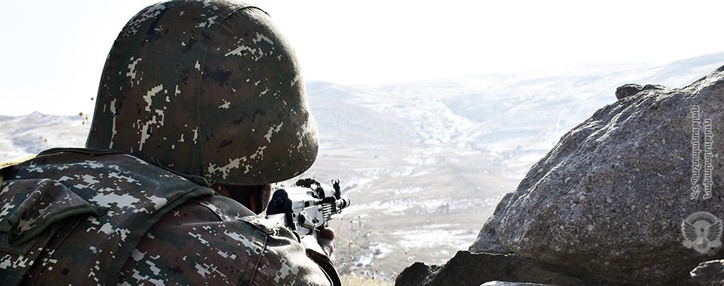Investigation is underway to identify circumstances behind surrender of Shushi, chief of army staff says
22.06.2021,
13:56
It is physically unrealistic to bring the new line of contact with Azerbaijan (that has emerged after the 44war last autumn in Nagorno-Karabakh) ) to the same level as the rest of it in just one year, chief of army's staff Artak Davtyan told reporters on Tuesday.

YEREVAN, June 22. /ARKA/. It is physically unrealistic to bring the new line of contact with Azerbaijan (that has emerged after the 44-day war last autumn in Nagorno-Karabakh) ) to the same level as the rest of it in just one year, chief of army's staff Artak Davtyan told reporters on Tuesday.
According to him, the fortification of the borders is an ongoing process. "You just need to understand that the older line of contact has been well fortified over the past 25-30 years," Davtyan said.
Artak Davtyan also said the investigation into how the town of Shushi and the Hadrut district in Nagorno-Karabakh had been surrendered during the war was underway.
He said the commission set up by the minister of defense is actively working to investigate a string of reports regarding the performance of Armenian troops during the war to identify omissions.
He said the answers are expected in a short time, since there are living people behind each case, servicemen who must either be held accountable or there must be no unfounded accusations.
'The task is not to blame someone, but first of all to learn lessons in order to understand the omissions and shortcomings or positive aspects and draw conclusions," Davtyan said.
On September 27, 2020, Azerbaijani armed forces, backed by Turkey and foreign mercenaries and terrorists, attacked Nagorno-Karabakh along the entire front line using rocket and artillery weapons, heavy armored vehicles, military aircraft and prohibited types of weapons such as cluster bombs and phosphorus weapons.
After 44 days of the war, on November 9, the leaders of Russia, Azerbaijan and Armenia signed a statement on the cessation of all hostilities. According to the document, the town of Shushi, the districts of Agdam, Kelbajar and Lachin were handed over to Azerbaijan, with the exception of a 5-kilometer corridor connecting Karabakh with Armenia.
A Russian peacekeeping contingent was deployed along the contact line in Karabakh and along the Lachin corridor. -0-
According to him, the fortification of the borders is an ongoing process. "You just need to understand that the older line of contact has been well fortified over the past 25-30 years," Davtyan said.
Artak Davtyan also said the investigation into how the town of Shushi and the Hadrut district in Nagorno-Karabakh had been surrendered during the war was underway.
He said the commission set up by the minister of defense is actively working to investigate a string of reports regarding the performance of Armenian troops during the war to identify omissions.
He said the answers are expected in a short time, since there are living people behind each case, servicemen who must either be held accountable or there must be no unfounded accusations.
'The task is not to blame someone, but first of all to learn lessons in order to understand the omissions and shortcomings or positive aspects and draw conclusions," Davtyan said.
On September 27, 2020, Azerbaijani armed forces, backed by Turkey and foreign mercenaries and terrorists, attacked Nagorno-Karabakh along the entire front line using rocket and artillery weapons, heavy armored vehicles, military aircraft and prohibited types of weapons such as cluster bombs and phosphorus weapons.
After 44 days of the war, on November 9, the leaders of Russia, Azerbaijan and Armenia signed a statement on the cessation of all hostilities. According to the document, the town of Shushi, the districts of Agdam, Kelbajar and Lachin were handed over to Azerbaijan, with the exception of a 5-kilometer corridor connecting Karabakh with Armenia.
A Russian peacekeeping contingent was deployed along the contact line in Karabakh and along the Lachin corridor. -0-



